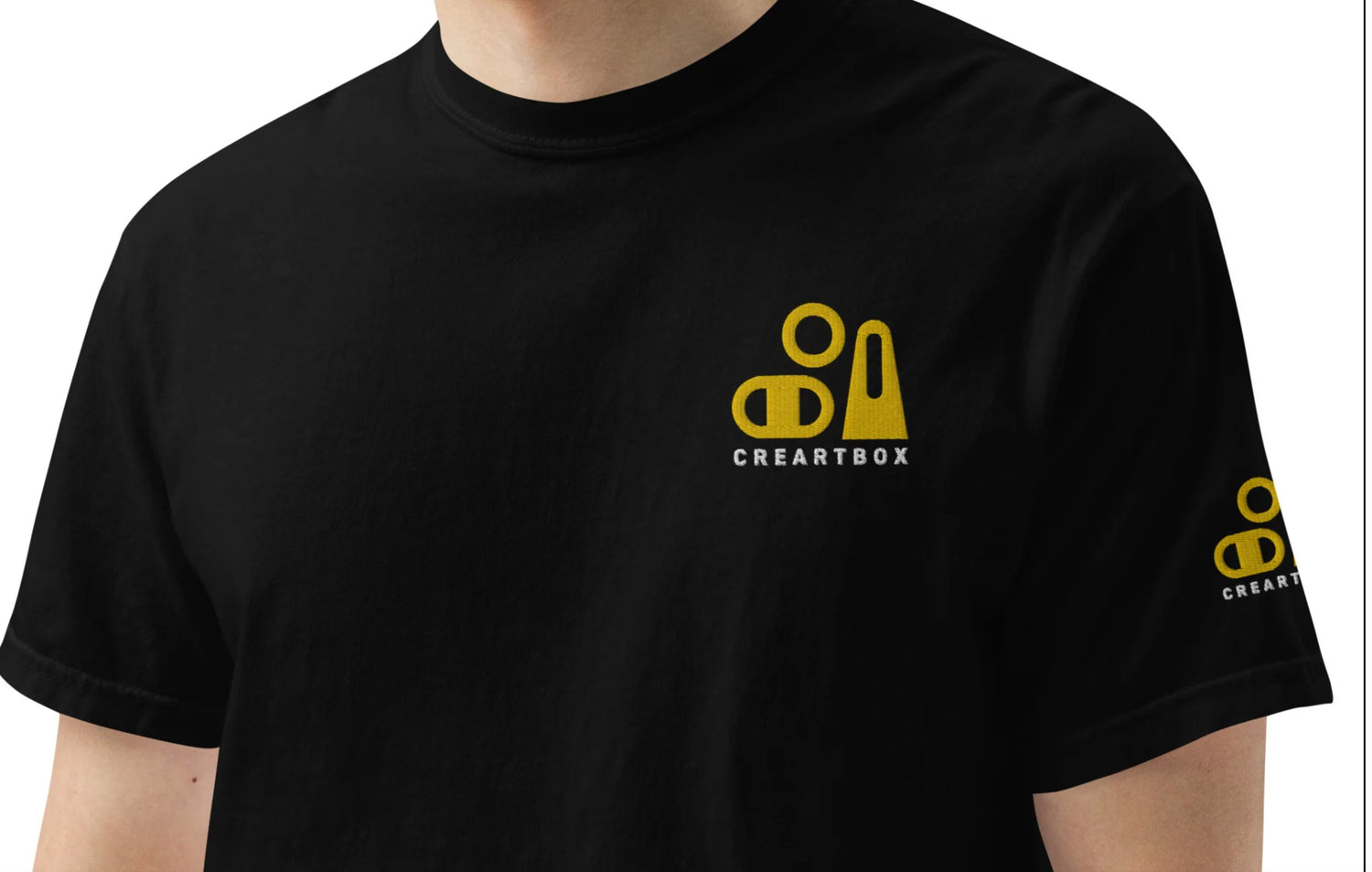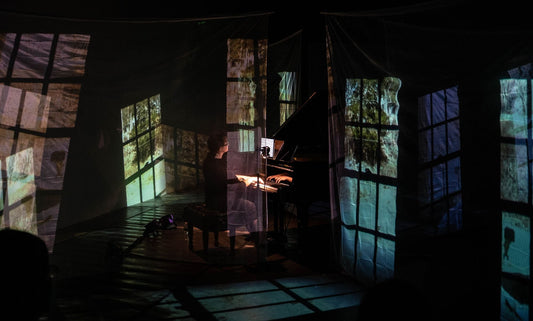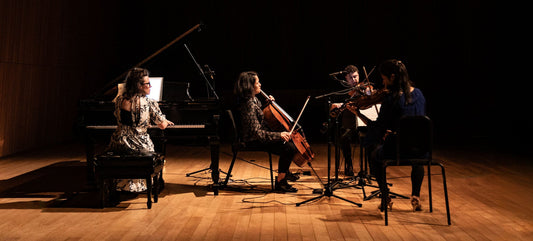Hailing from Spain, artists Tagore Gonzalez and Isis de Coura and their company Maria and Rodrigo have collaborated with CreArtBox to present Two Roads, a collaborative work that will close the 2019 CreArt Music Festival. The pair’s creativity contributed heavily to the work, and we had a chance to speak with the creative minds behind the staging, set, and costume design of Two Roads. From differences of culture between cities to an unveiling of their creative processes, Gonzales and de Coura presented us with their unique perspectives in this exclusive interview.
Compared to Madrid, what similarities and differences are you expecting to find in the cultural activities of NYC?
New York is one of the most cosmopolitan cities in the world, and with such an interesting diversity of people from all over the world we are sure that we will find diverse cultural activities, from the most underground and experimental to the most commercial, carefully packaged to be consumed by the masses.
In Madrid there is also diversity in the cultural offerings, however everything is too politicized, and the cultural programming depends on the partisan ends. Culture should walk away from any ideological symptom and be supported if there is a coherent creative base behind it, regardless of the governing party at that time. It also happens with people who manage art centers; they often depend on political entities and manage the spaces far from the quality, rigor, and freedom that all artistic expression demands.

How do you translate your creative ideas from concept to stage realization?
For us it is important as a first step to generate a physical panel to dump concrete or abstract concepts and sensations through images, sketches, texts, textures or any other input suggested by the project to generate a chaotic and messy panel that will take shape during the process. This panel is formed by physical actions, by words, by printed images, sketches of spaces, or concrete actions. Similarly with the sound design, we work a lot from the sound and it is important to ask as soon as possible what the project sounds like, and to generate a folder with hours of music that could intuitively be part of that project, even if afterwards not a single minute from that folder is used.
Once that great initial brainstorm is generated, the physical activity comes into play: the bodies that inhabit a space. You have to leave a large space for improvisation in rehearsals, to allow yourself for a while to meet the people in front of you who will defend a series of concepts and ideas on stage, and to guide them to extreme stages to discover their abilities, strengths, and weaknesses. From there, everything consists of discarding and specifying the type of movement or corporal expression that is sought for each character or for the whole work; In short, find the physical language of the work.
It is interesting that the design of the scenography, the manipulation of objects, comes into our minds from the beginning with ideas or suggestions that in many cases can become the initial engine to develop the complete work or a scene. We start from those initial images, from the concepts we want to talk about, to begin to translate certain sensations of the work into materials, textures, forms, and ultimately generate the framework that will house those bodies in motion, and that will be so full of details that they will “talk” more or less explicitly about the sensations that the show wants to convey.
In a type of show that is transversal, rather than part of an established script or a response to a traditional play, we consider it important that all the areas that are going to intervene in the construction of the show go walking at the same time. That means that the words, the movement, the plastic, and sound design are created and proposed to feed each other and to allow finding the “language” of the work, to build a hypothetical show that will constantly mutate until the day of the premiere.
In the end the important thing is to have time to generate a creative process that can listen and attend to improvisation, to the mistakes, to the discards, to let an image rest in the drawer for two weeks, or allow to pay attention to the instinct. With time, process and a dedicated team, everything is sorted little by little.

How important is a sense of narrative to you?
Having a narrative feeling for us is always important, even if it is abstract, imperceptible to the viewer, or simply acts as a guide to generate the artistic content that is going to be exhibited. An exhibition has a narrative x, perhaps translated in the order of the exposed ideas, in the route that the spectator might take on the space, in the theme of the exhibited works. For us, in our creative ideal, the narrative is transversal and it is not given solely by a text or the history of specific characters. Our pulsations respond to more open concepts and with a wider space both for our interpretation and for the interpretation of the viewer. However, to build it is always necessary to generate guides or narratives through the sound design, the achievement of a series of physical actions, the concepts on which you want to speak, the word, whether projected or spoken, or something so simple as the manipulation of an object. All this should ultimately generate a narrative that draws the landscapes on which you want to go and helps build the structure of the show and the journey that the viewer will be a part of.

Two Roads is set to be premiered September 1st at the Plaxall Art Gallery, and you two have come to work as the scene and stage director and costume designer. How did you approach this collaboration?
In Two Roads we start from a skeletal drawing, intuited, with some very specific parts and with others lost in a more abstract and suggestive framework, accessible from different places. A skeleton is something structural that needs a whole series of gears to begin to come alive. It is there and from a horizontal work, where the different tools begin to speak, and where each of the artists who intervene and share their creativity, impregnate that initial structure with their experience, their craft hands, their language or way of doing. This spreads to others, and makes a work of collective creation acquire a unique and special language, while retaining the personal language of each.
One year ago you received the Villalar foundation prize to create The Abyss. Could you tell us more about this work?
The Abyss of the Birds is born from a deep listening of the musical work Quatuor Pour la Fin du Temps composed by Olivier Messiaen in the prison camp of Görlizt during the Second World War, being the inspirational starting point to condense the most extreme corners of the mind of the human being that, on one hand, is capable of subjecting, humiliating, imprisoning and violently killing other members of its own species and, on the other, can generate a timeless masterpiece within the limits of that repression . This musical engine led to the meeting of 11 performers from 7 to 74 years of age along with a creative team during a year-long process in which they discovered and investigated the shape of this stage piece.
The veracity of the disoriented, something of mankind after violence, ultrasound of a dead environment, and a space without intimacy brings out the fragility of the most needy. The Abyss of the Birds proposes a series of portraits where the bodies exposed to a place short of life vanish and fragment in an endless vital loop. It is a work with a marked aesthetic that forms the perfect frame where to deepen into opposite sensations. The physical vocabulary that appears sporadically is a constant nod to the genuine, yet at the same time reproduces a landscape full of thoughts and situations where manipulation, waiting, and instinct guide the course of this scenic piece.
The work is located in a gray space, bare, empty and cold, needy of intimacy, where the beauty that arises between quicksand will gain a greater meaning in opposition to this space that contains visceral maps, illusions, longings, impositions and it also serves as an allegory of time, as Messiaen defined his third movement of the quartet:
“The abyss is time, with its sadness, with its weariness. Birds are the opposite of time, they are our desire for light.”






